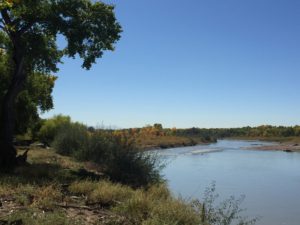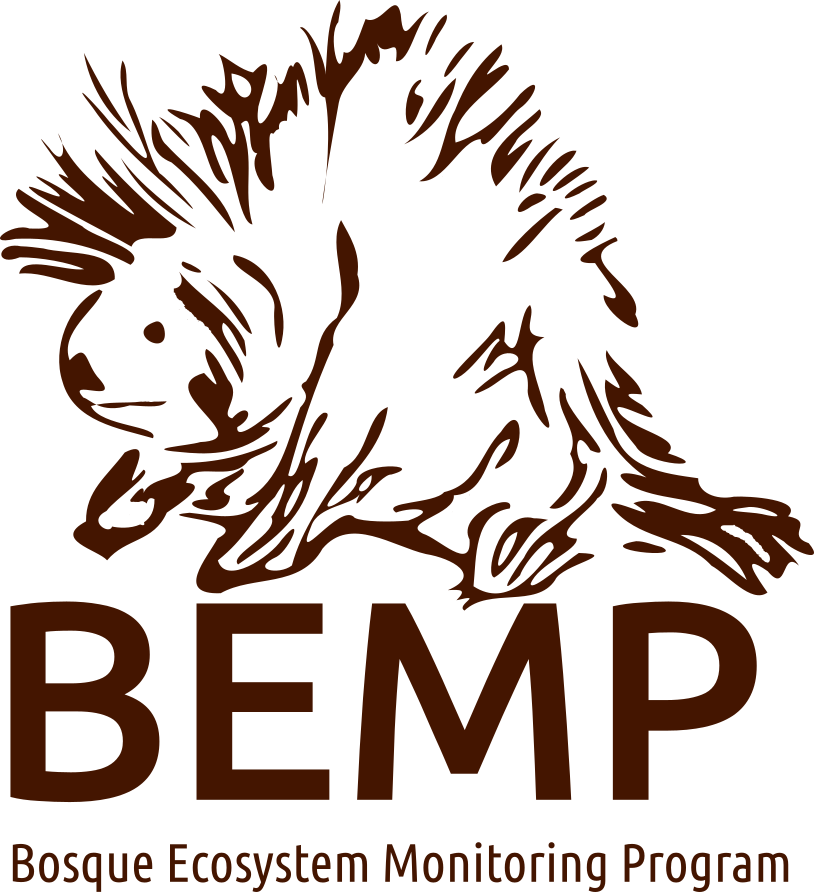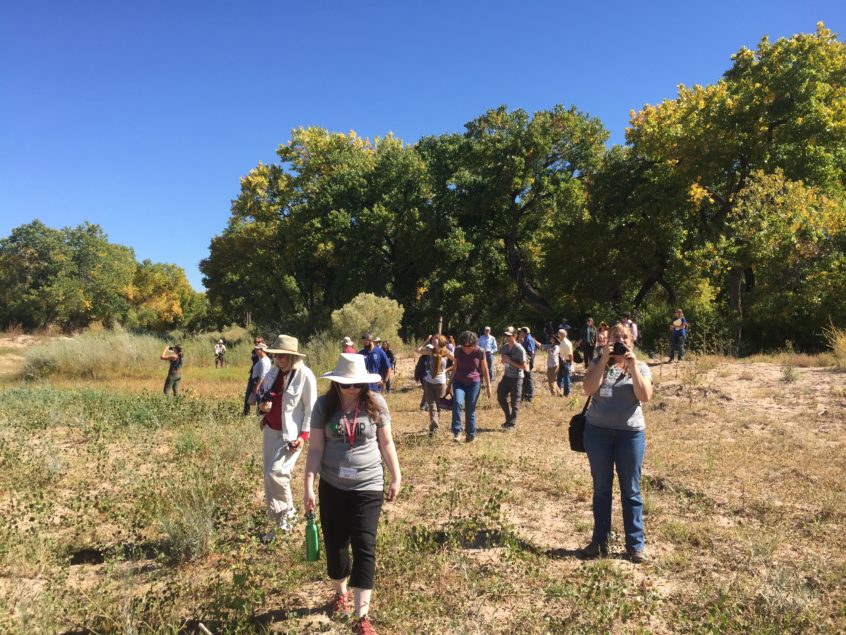On October 14th, BEMP hosted its annual Fall Field Tour. We shared new findings about the bosque from the BEMP perspective and through the lens of the our partner agencies and communities. The Fall Field Tour allows us to present our work, receive feedback, and exchange ideas face-to-face with our collaborators, and gives them an opportunity to connect with one another.
 This year’s Fall Field Tour took place in the Sandia Pueblo bosque, adjacent to both BEMP’s monitoring site and several US Army Corps of Engineers restoration projects. Frank Chaves and Mike Scialdone of the Sandia Pueblo both gave important talks about the cultural and ecological history of the area, noting that the lack of river connectivity to the surrounding floodplain made re-growth of new cottonwoods and other native species very challenging. This has major implications not only for riparian habitats, but for the people who have long depended on the “Mother River”, as the Rio Grande is called by the Sandia people.
This year’s Fall Field Tour took place in the Sandia Pueblo bosque, adjacent to both BEMP’s monitoring site and several US Army Corps of Engineers restoration projects. Frank Chaves and Mike Scialdone of the Sandia Pueblo both gave important talks about the cultural and ecological history of the area, noting that the lack of river connectivity to the surrounding floodplain made re-growth of new cottonwoods and other native species very challenging. This has major implications not only for riparian habitats, but for the people who have long depended on the “Mother River”, as the Rio Grande is called by the Sandia people.
Danielle Galloway of the Army Corps discussed the growback rates of several native and non-native plant species post-restoration work in the area. Steve Boberg of the Army Corps explained how each of the restoration initiatives improves the river’s ability to mimic past flooding processes. He noted that flow-through channels can be designed and constructed outside the main channel, which distribute water outside the incised river reaches at flows of at least 3000 cubic feet per second. These channels create important Southwestern Willow Flycatcher and Rio Grande Silvery Minnow habitat; both species are endangered. The group was invited to see one of these channels at the southern end of the Sandia Pueblo’s land, where cottonwood seedling regrowth was beautifully abundant.
 Dr. Kim Eichhorst of BEMP gave a talk about how native plants are still able to out-compete exotic plants in flooded areas, reinforcing the idea that with the right restoration efforts and consistent monitoring by BEMP students and staff, we are able to see semblances of the healthy, flood-prone bosque in certain areas today.
Dr. Kim Eichhorst of BEMP gave a talk about how native plants are still able to out-compete exotic plants in flooded areas, reinforcing the idea that with the right restoration efforts and consistent monitoring by BEMP students and staff, we are able to see semblances of the healthy, flood-prone bosque in certain areas today.
We want to thank the Pueblo of Sandia, especially Frank and Mike, for hosting our BEMP Fall Field Tour this year. Thirty staff and scientists from at least 10 different agencies and groups were represented in the group that attended on Friday. We are so grateful to everyone that dedicated a day of their busy schedules to learning more about BEMP’s work in the bosque for and with our stakeholders.

